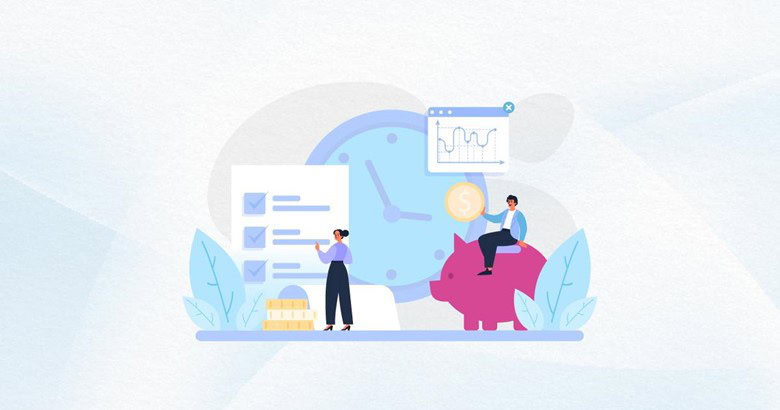 In today’s cloud-driven world, businesses must be smart about managing their cloud expenses. While cloud platforms offer flexibility and scalability, they can also lead to rising costs if not managed effectively. Here are five cloud cost-saving tips and strategies to help your business optimize its cloud spend.
In today’s cloud-driven world, businesses must be smart about managing their cloud expenses. While cloud platforms offer flexibility and scalability, they can also lead to rising costs if not managed effectively. Here are five cloud cost-saving tips and strategies to help your business optimize its cloud spend.
1. Right-Sizing Resources
One of the most effective strategies to curtail unnecessary expenses within a cloud environment is by right-sizing resources. This approach revolves around aligning the capacity of resources precisely with the actual workload demands.
By meticulously analyzing the usage patterns and performance metrics of various resources—such as compute instances, storage volumes, or database configurations—businesses can accurately ascertain the appropriate size needed to support their operations and minimize excess cloud allocation & purchase.
2. Leverage Reserved Instances (RIs) and Savings Plans
Reserved Instances or Reserved Virtual Machine Instances offer a cost-effective solution for workloads with predictable usage patterns. By committing to a specific instance type and term, businesses can achieve significant cloud cost savings compared to On-Demand Instances. Evaluate your long-term needs and strategically allocate resources using RIs to secure favorable pricing.
On the other hand, Savings Plans provide flexibility and cost savings by allowing you to commit to a consistent amount of usage (measured in $/hr) for a 1 or 3-year period. Unlike RIs, Savings Plans offer flexibility in terms of instance type, family, and operating system while simultaneously offering a lower cloud rate enabling you to optimize your cost efficiently.
3. Implement Strong Cloud Governance
A cloud governance framework is a structured and comprehensive set of policies, procedures, and controls that regulate how users work in cloud environments for consistent performance of cloud services and systems within an organization.
It is crafted to ensure system integration, data security, and efficient cloud deployment to meet business goals. Implementing and monitoring the cloud governance framework allows businesses to improve oversight and control over cloud operations like data management, data security, risk management, legal procedures, and cloud cost management
4. Automate Cost Monitoring with Anomaly Detection
By leveraging automated tools that provide real-time cost anomaly detection, organizations can swiftly identify sudden spikes or unexpected increases in cloud expenditure. These advanced systems continuously monitor spending patterns and alert teams instantly when anomalies occur, enabling quick responses to mitigate cost overruns before they escalate.
Moreover, many of these tools are equipped with robust analytical capabilities that go beyond basic alerts. They offer deep insights into the underlying causes of cost fluctuations, such as inefficient resource allocation, unexpected usage surges, or configuration errors.
By integrating third-party solutions, companies can gain enhanced cloud cost visibility, better understand the root causes of anomalies, and take proactive steps to manage and optimize their cloud spend. This not only prevents financial surprises but also fosters more efficient and cost-effective cloud operations over the long term.
5. Optimize Your Application Architecture
Re-architecting your applications to be cloud-native can significantly increase efficiency and unlock substantial cloud cost savings over time. While lift-and-shift migrations—where applications are moved to the cloud without significant changes—may provide a quick path to the cloud, they often result in higher operational costs.
This is because these applications are not optimized to take full advantage of cloud-specific features, such as dynamic resource allocation or pay-as-you-go pricing models.
On the other hand, refactoring your applications to be cloud-native means redesigning them to leverage cloud services and architectures that are inherently more cost-efficient. By utilizing managed services such as AWS Lambda for serverless computing or Kubernetes for container orchestration, organizations can improve application performance, reduce infrastructure management overhead, and lower operational expenses.
Managed services offer benefits like auto-scaling, which automatically adjusts resources based on demand, and serverless architectures, where you only pay for the exact compute resources used. Containerization allows for efficient deployment and scaling of applications while reducing the need for maintaining dedicated virtual machines. These features not only reduce costs but also improve flexibility, scalability, and resilience, positioning your business to better handle growth and fluctuating workloads without significant infrastructure investments.
Wrapping it Up:
By adopting these strategies, your business can achieve substantial reductions in cloud costs while maximizing the value of its cloud investments. Implementing cloud-native architectures, optimizing resource usage, and leveraging managed services are key to driving cost efficiency.
CloudKeeper offers a comprehensive approach to cloud cost management, delivering immediate savings through its cloud cost optimization platform. It goes beyond just monitoring and alerting; it provides end-to-end cost transparency, allowing businesses to see exactly where their cloud spend is going and identify areas of inefficiency.



















Thank you for sharing these insightful cloud cost-saving strategies. The emphasis on right-sizing resources and leveraging Reserved Instances or Savings Plans is particularly valuable for businesses aiming to optimize their cloud expenditures. Implementing strong cloud governance further ensures that resources are used efficiently and policies are adhered to. These practical tips are essential for any organization looking to manage their cloud costs effectively.
Great article! The tips for saving costs in the cloud are practical and easy to implement. I especially liked the focus on optimizing resource usage. Thanks for sharing these valuable strategies